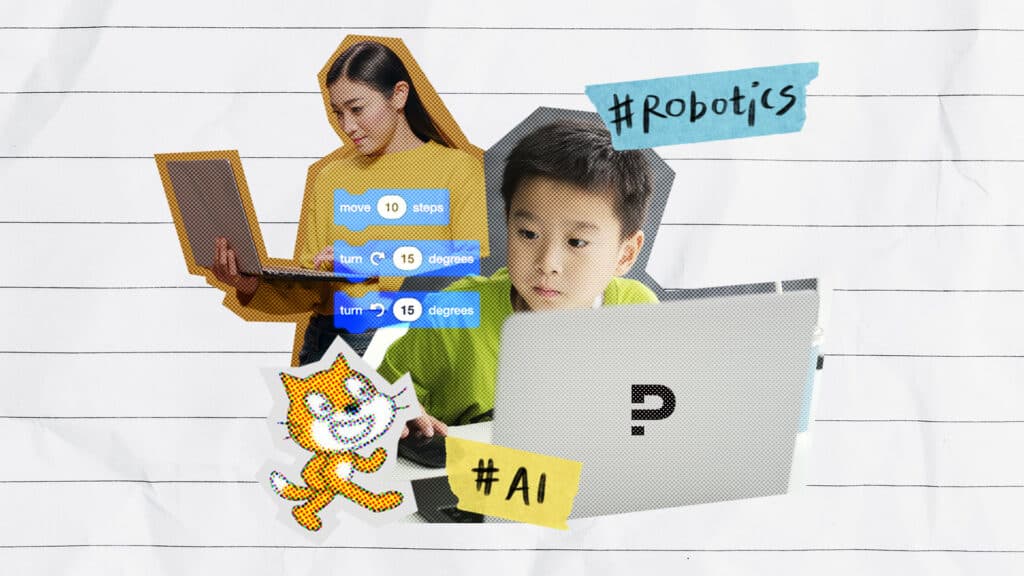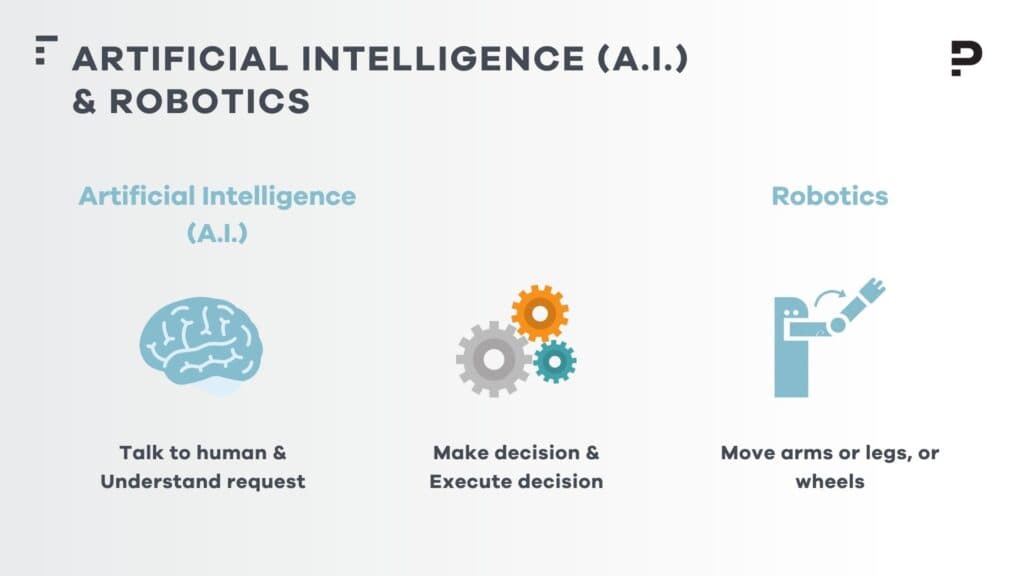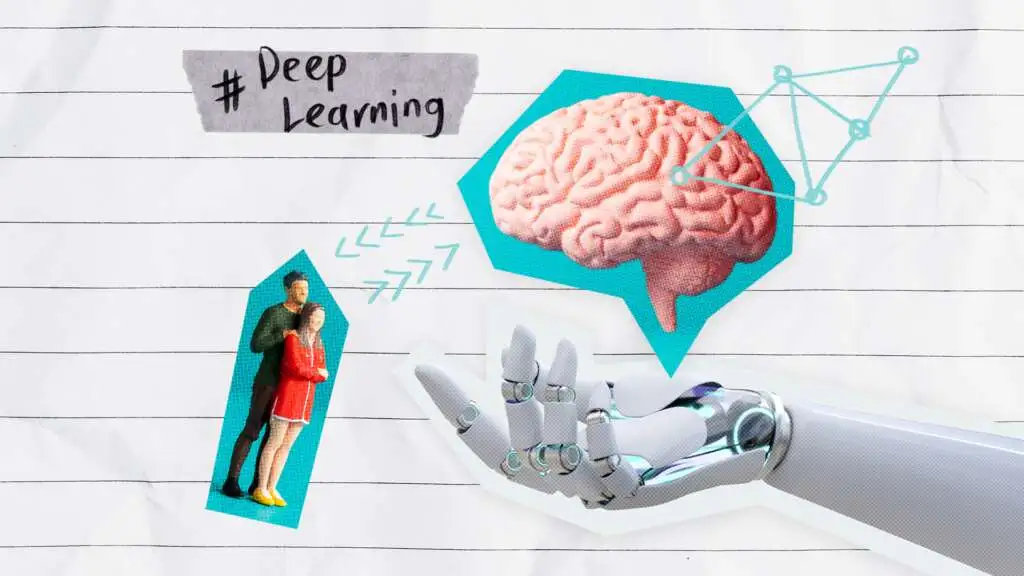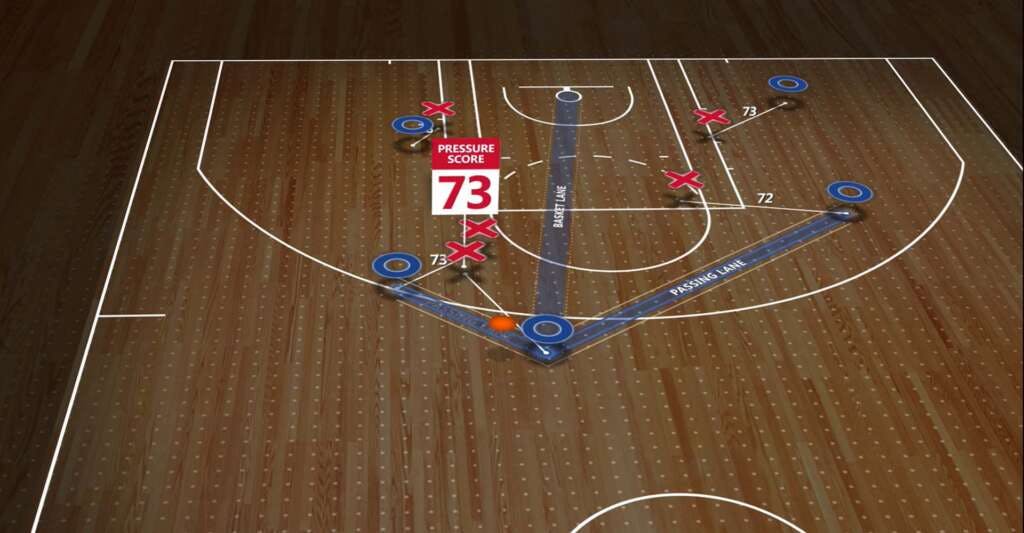Ultimate Guide for Parents: Artificial Intelligence (A.I.) and Robotics 2023

Letter to Parents: It is not difficult to understand, as parents, we want to help our children understand, adopt and even master new technologies that surround them. In the past few years, you might have heard buzz words such as NFT, metaverse, cryptocurrency, as well as Artificial Intelligence (A.I.) and Robotics. But what are these to do with our lovely children in future?
Take A.I. and Robotics as examples, both provide wonderful learning opportunities for children, but they are actually very different things.
What is Artificial Intelligence (A.I.)?
To be simple, Artificial Intelligence (A.I.) is about creating computer programs that can do things that human brains often do. It is software that talks to humans, understands their voice and behaviour.
Examples are understanding text, recognising images, finding patterns in examples, mapping solutions to problems, creating game strategies, etc.
To conclude in three words: Train, Learn and Predict. A.I. programs usually start by training or learning, then apply the learnings to solve new problems, so as to predict what is going to happen next.
What is Robotics?
Robotics is about controlling robots and physical devices. These devices are usually connected to different kinds of computer programs. By changing the program, one can change the way the speed, direction and even movement pattern of the device.
For example, TEMI is a good example of robots.
Robotics requires that one understand physics and hardware mechanics such as actuators and sensors, and some especially require the knowledge of coding.
Read more:Guide To Become A Data Scientist In Hong KongA Guide to Become a UX/ UI Designer in Hong KongAn introduction to Slasher and Slash CareerHow to be a Digital Nomad in 2023? Here are 5 things you need to know
Comparison between Artificial Intelligence (A.I.) and Robotics
Artificial Intelligence (A.I.) and Robotics are two related but totally different fields.
In layman’s language, A.I. is the brain and Robotics is the body. In general, the part that mimics human interaction or makes decisions is Artificial Intelligence (A.I.), and the part that performs physical tasks or drives hardware is Robotics.
Here is a table of comparison between Artificial Intelligence (A.I.) and Robotics:
| Artificial Intelligence (A.I.) | Robotics | | * Computer program that demonstrates human intelligence and behaviours | * Machines that executes simple or complex tasks automatically with utmost speed and precision | | * Bridge between machine and human | * A field of Artificial Intelligence that make use of A.I. to improve their functions | | * Applications that use A.I. such as Apple’s Siri, Netflix, Spotify, Google’s DeepMind etc | * Applications that use robots such as medical surgical applications, laboratory research etc |

Imagine, we verbally ask a robot to go to another room and pick up an iPad: “Robot, please get the iPad from the study room for me”. The figure above shows how A.I. and Robotics fit into this task.
A.I. is the software that talks to the human, understands their voice and interprets their request – spot the study room, and map a route from its current location to the study room and the iPad.
Robotics is the software that programs the robot legs or wheels to move, to step in the study room, and to lift the arm and get the iPad, as it needs to (or programmed to).
Another example, more for grown-ups, is the production line of the car industry. The software inside the car that makes it self driving is A.I., whereas the production line that builds the physical car is Robotics.
In conclusion, A.I. is about how systems emulate the human mind to make decisions and learn, whereas robotics involves the creation of robots to perform tasks without further intervention, frequently used to automate tasks.
Reference: Difference Between, Medium
5 reasons children should learn A.I. and Robotics
For children, learning A.I. and robotics not only allow them to explore new horizons, but also get ready for the future.
Here are 5 reasons why your children should learn A.I. and Robotics and how it benefits your children:
1. Ignite curiosity and make learning fun
Getting bored is the biggest blocker for children to learn, especially on scientific theory. By building a robot or making an A.I. application, we allow them to apply scientific knowledge in reality and to learn vividly.
2. Develop an interest in STEM subjects
S.T.E.M subjects include Science, Technology, Engineering, and Mathematics, which were more theory-focused subjects for kids in the past. On the contrary, A.I. and Robotics programs for kids emphasise on real life experiments rather than theoretical learnings, which in turn helps children to develop an interest in STEM and explore their potential in an earlier stage through practical knowledge.
3. Hone programming skills
Once you find your children have shown an interest in computer science or related fields in the future, an A.I. and robotics education can pave the way. As building robots and working with A.I. involves programming and coding that are relevant to computer science. Not to mention that there are some exciting options when it comes to careers in robotics.
4. Learn problem-solving and encourages teamwork
In A.I. and Robotics workshops or bootcamps, students are always encouraged to work in small groups. By then, children can learn how to socialise, consider different viewpoints, and bounce ideas off of one another, and come up with the best solution while applying maths and science concepts collaboratively.
5. Accept Criticism
Accepting constructive criticism is an important part of growing. Through the inevitable trial-and-error in robotics programs, children can learn how to use these pieces of criticism to their advantage to improve their projects, and to understand taking pieces of advice can help them succeed in the long run.






